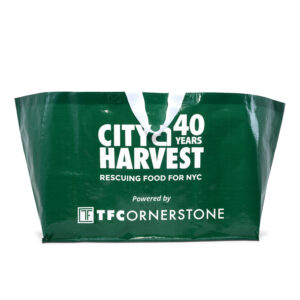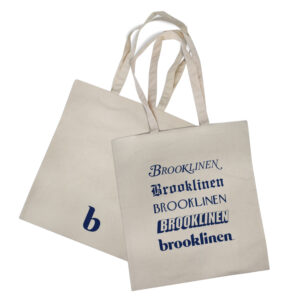













With Earth Day 2024 fast approaching, the spotlight intensifies on the urgent need to combat single-use plastic pollution. This year’s theme, “Planet vs Plastics” is a global observance reminding us of our duty to safeguard the environment. A crucial pivot point for industries worldwide. Notably the packaging sector.
The dialogue surrounding sustainable packaging options is gaining momentum. As a result, we are being encouraged to move away from traditional single-use packaging materials that linger in our ecosystems. In the U.S. alone, an alarming 30% of single-use plastics are discarded each year. Consequently, this underscores the pressing demand for eco-friendly alternatives that employ recyclable and biodegradable materials.
Diving into the heart of Earth Day 2024’s mission, this article unveils the transformative journey of packaging towards sustainability. With a keen focus on what is green packaging, we explore a plethora of sustainable packaging options. To mitigate the environmental damages of the past, the industry implements various options for sustainable packaging. From compostable packaging and recyclable materials to cutting-edge innovations, the shift towards sustainability in packaging reflects a broader commitment across industries.
Major brands are incorporating sustainable materials in package design and demonstrating that luxury and environmental responsibility can indeed coexist. Additionally, this narrative not only stresses the significance of eco-friendly materials but also illustrates the vital role of recyclable packaging in fostering a more sustainable, circular economy.
Significance of Earth Day in Shaping Environmental Consciousness
Earth Day, initiated in 1970, is a pivotal event in global environmental activism. Constantly drawing attention to urgent ecological issues and fostering a collective spirit towards sustainability. The annual observance serves as a profound reminder of the interconnectedness of all components within ecosystems. Emphasizing the ripple effects of human activities on the environment.
Over the decades, Earth Day has catalyzed significant environmental actions and policy shifts. Leading to the establishment of the Environmental Protection Agency (EPA) and the enactment of critical legislation such as the Clean Air Act and the Endangered Species Act.
Earth Day’s Global Influence
- Initiation and Expansion: First, starting with 20 million Americans, Earth Day influences global environmental consciousness, expanding to mobilize 200 million people across 141 countries by 1990.
- Legislative Impact: Next, the event is a catalyst for substantial environmental legislation. Including the Water Quality Improvement Act and the Toxic Substances Control Act, which shape sustainable practices worldwide.
- Education and Advocacy: Then, Earth Day’s role in education and advocacy continues to grow. Finally, focusing on ten core issues such as climate change, energy, recycling, and sustainable development.
The theme for Earth Day 2024 is “Planet vs. Plastics,” underlining the imperative need to reduce plastic pollution in our environment. This theme not only highlights the necessity of reducing plastic production by 60% by 2040; but promotes broader sustainability measures. Such as waste reduction, resource reuse, and the restoration of natural habitats. By implementing targeted initiatives, Earth Day motivates individuals and communities alike to take action toward fostering a sustainable future free from plastic.
The Impact of Earth Day on the Packaging Industry
Sustainable Solutions and Industry Shifts
The packaging industry, spurred by Earth Day initiatives and increasing consumer awareness, is actively transitioning towards more sustainable practices. These efforts complement the development of packaging systems that emphasize the reuse and recycling of resources. Thereby minimizing waste. Companies are also shifting towards minimalist and lightweight packaging designs. Resulting in considerably lowering the environmental toll linked to the manufacturing and disposal of single-use packaging materials.
Technological Innovations and Consumer Engagement
Smart packaging technologies are revolutionizing the industry by enhancing supply chain transparency. These advancements enable consumers to obtain comprehensive insights into the product’s origin, production methods, and environmental impact. Furthermore, Packaging as a Service (PaaS) models are gaining traction. Additionally promoting reusable and returnable packaging options that contribute to substantial reductions in single-use waste.
Strategic Reductions and Recycling Efforts
Manufacturers adopt source-reduction tactics to reduce waste during the initial stage of a product’s life cycle by using fewer raw materials. By switching from inflexible to more adaptable packaging, they not only use less material but also require less energy for production, resulting in lower carbon emissions during transportation. The use of post-consumer waste materials is another critical approach. Moreover, it’s important to note these measures help conserve and reduce the environmental burden associated with virgin plastic production. These measures are crucial in moving the industry towards a more sustainable and environmentally responsible future.
Innovative Packaging Solutions for Earth Day 2024
As Earth Day 2024 approaches, the push for innovative packaging solutions that prioritize sustainability is more crucial than ever. Leading this charge, Earthday.org advocates for significant investments in technologies that seek sustainable alternatives to traditional plastics. These innovations are not just about reducing waste but are pivotal in shaping a more sustainable future for the packaging industry.
New Sustainable Packaging Innovations
- Compostable Packaging: Packaging made from materials that break down over time, whether at home or in a commercial composting facility.
- Biodegradable Packaging: Similar to compostable packaging, biodegradable materials are also capable of breaking down into natural components over time.
- rPET Fabrics: Fabrics made from recycled water bottles are taking the packaging industry by storm with their reusable and sustainable advantages.
Single-Stream Recycling and Lightweight Materials
The focus on creating closed-loop systems where materials are constantly recycled, and the adoption of lightweight materials, are trends gaining momentum within the industry. These practices not only reduce the volume of waste but also decrease the carbon footprint associated with the transportation and production of packaging materials.
Smart Packaging and Packaging as a Service (PaaS)
Smart packaging technologies are revolutionizing the way consumers interact with products. Offering greater transparency about the supply chain and the sustainability of the products. Moreover, the Packaging as a Service model is redefining product packaging by promoting reusable and returnable packaging solutions. Significantly reducing the reliance on single-use packaging options.
These innovative approaches underscore a collective movement towards more sustainable packaging solutions, aligning with the ethos of Earth Day. As these technologies and methods evolve, they pave the way for more responsible consumption and production patterns, essential for a sustainable future.
Understanding Eco-friendly Materials: Definition and Benefits
Eco-friendly packaging adheres to the Sustainable Packaging Coalition‘s strict guidelines, ensuring that materials and processes are beneficial, safe, and healthy. This packaging is engineered to comply with market standards for performance and affordability. Utilizing renewable energy throughout its sourcing, manufacturing, transportation, and recycling phases. It emphasizes the use of renewable or recyclable materials and incorporates clean production technologies. The eco-friendly materials are designed to be non-toxic from start to finish, maximize efficiency in material and energy use, and are fully reclaimable. Contributing to both biological and industrial single-stream recycling systems.
Environmental and Business Benefits
- Reducing Your Carbon Footprint: Eco-friendly packaging materials like bamboo,
- FSC® certified paper, or cardboard significantly lower carbon emissions. These materials are biodegradable, easily disposable and free from harmful toxins.
- Brand Image and Cost Efficiency: Utilizing eco-friendly packaging enhances a brand’s image and can lead to savings in transportation costs. As consumer demand for sustainable products grows, businesses that adopt green packaging solutions can expand their customer base.
Common Eco-Friendly Packaging Materials
- Paper and Cardboard: Widely used for their biodegradability and ease of recycling.
- Reusable Fabrics: These materials are distinguished by their minimal environmental footprint and are frequently derived from recycled or renewable resources.
- Innovative Ideas: Options like resealable pouches, canvas tote bags, and boxes are crafted from materials that support sustainability. Showcasing how businesses can creatively reduce their ecological footprint.
These materials and strategies exemplify the commitment to sustainability that is critical for environmental preservation and are integral in supporting the principles of a circular economy.
Recyclable Materials: Importance in the Circular Economy
Recyclable materials are pivotal to the circular economy, a system that prioritizes resource efficiency by prolonging product life cycles through reuse, repair, and recycling. This sustainable model helps preserve natural resources while minimizing environmental pollution and cutting down on greenhouse gas emissions.
Key Aspects of Recycling in a Circular Economy
- Conservation of Resources: Recycling critical materials prevents the depletion of natural resources, ensuring they remain in circulation for future use. By transforming waste into valuable raw materials, recycling reduces the need to extract virgin resources, which often involves high environmental and economic costs.
- Energy Efficiency: Recycling materials significantly reduces energy consumption compared to manufacturing new products from raw materials. For example, recycling aluminum can save up to 95% of the energy that would be needed to produce it from raw bauxite.
- Economic Benefits: Recycling not only contributes to environmental sustainability but also boosts the economy by creating jobs in the recycling and manufacturing industries. It fosters a market for recycled materials, encouraging innovation and competition among businesses.
Challenges and Solutions in Recycling
To begin with, the efficiency of recycling processes is often affected by contamination. This is a result of non-recyclable materials mixing with recyclable ones, which can complicate the process and degrade the quality of recycled products. However, there are solutions to this problem. Firstly, it is essential to enhance consumer education on proper recycling practices. Additionally, advancements in sorting technology can effectively separate materials, contributing to the success of recycling processes.
Incorporating Sustainable Materials in Package Design
Navigating through the intricate landscape of sustainable packaging demands a carefully strategized approach toward the selection of materials and the overall design process. This requires a detailed examination of various factors that are critical to developing environmentally friendly packaging solutions. Below are several essential considerations to keep in mind:
Material Selection and Product Requirements
- Assess Product Needs: Understanding the specific requirements of the product is crucial. For instance, water resistance, air-tight features, and padding must be considered to ensure product integrity during transport.
- Life Cycle Assessment: Conducting a life cycle assessment helps in evaluating the environmental impact at each stage of the product’s lifecycle, including raw material acquisition, usage, and disposal.
- Material Properties: Choosing the right materials such as Compostable Bioplastics, Recycled Paper/Cardboard, Glass, Metal, and Recycled Plastic involves weighing factors like strength, flexibility, and environmental impact.
Final Thoughts
In conclusion, as Earth Day 2024 approaches, we need to reflect on the theme “Planet vs. Plastics” and recognize the crucial role each of us plays in combating plastic pollution. The journey towards sustainability in packaging, highlighted throughout this discussion, underscores a shared responsibility among consumers, businesses, and policymakers.
Along the way, we’ve explored how the adoption of sustainable packaging options not only minimizes environmental impact but also aligns with the evolving demands of consumers for eco-conscious products. These efforts are pivotal in steering us towards a greener future, emblematic of the ethos Earth Day aims to instill globally.
Moving forward, we must continue to champion innovations in sustainable packaging and support brands that prioritize environmental stewardship. The call to action for Earth Day 2024 extends beyond mere recognition of the issues to active participation in fostering practices promoting eco-friendly packaging. By making informed choices and advocating for policies that encourage the use of recyclable and biodegradable materials, we can collectively contribute to the well-being of our planet.
This Earth Day, let’s transform our commitment into action with PrimeLine Packaging. At PrimeLine, we’re not just recognizing the challenges of sustainable packaging; we’re pioneering solutions that uphold environmental stewardship. Every choice we make today shapes the health of our planet tomorrow, and we are dedicated to promoting practices that support eco-friendly packaging.
Join us in this vital movement:
- Advocate for Change: Push for policies that prioritize recyclable and biodegradable materials. Your voice can drive the demand for sustainable practices.
- Choose Sustainability: Opt for brands that are committed to reducing environmental impact. Support those who invest in innovative, earth-friendly packaging solutions.
- Educate and Engage: Spread the word about the importance of sustainable packaging. Share resources, participate in community discussions, and help others understand the value of making environmentally conscious choices.
Above all, Prime Line Packaging believes in creating a more resilient and environmentally conscious society. Our dedication to sustainability extends beyond Earth Day—it’s a commitment for every day. Let’s unite in our efforts to safeguard our planet for future generations.



